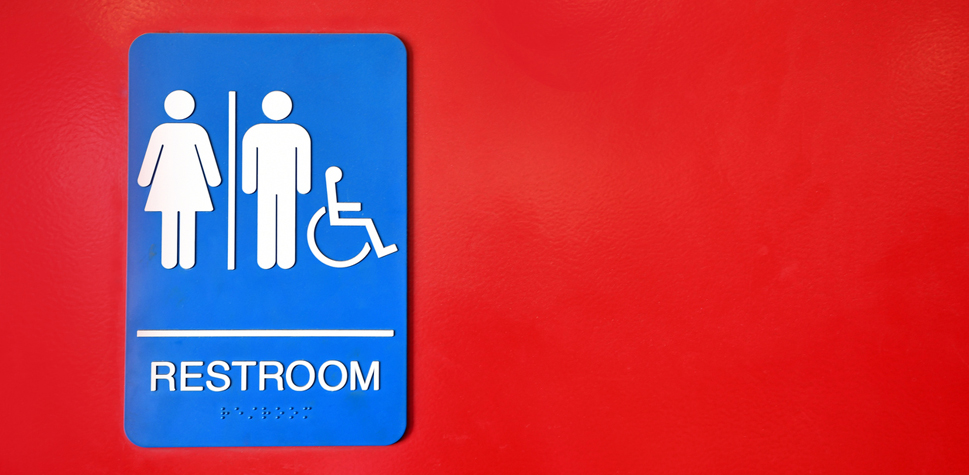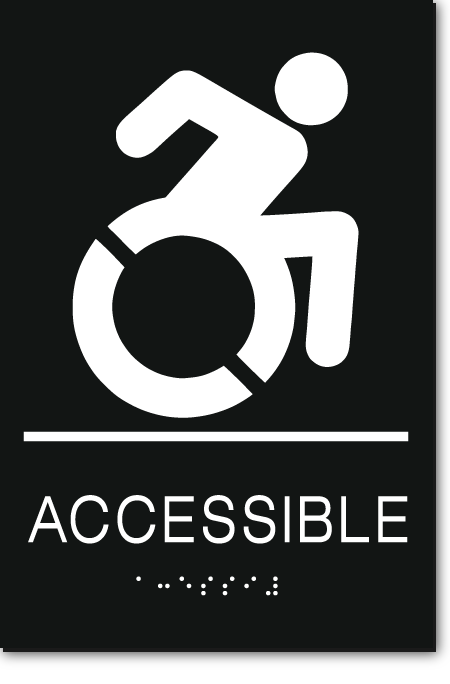Discovering the Trick Functions of ADA Signs for Enhanced Accessibility
In the world of ease of access, ADA indicators serve as silent yet effective allies, ensuring that areas are comprehensive and accessible for individuals with specials needs. By incorporating Braille and tactile aspects, these indicators break obstacles for the aesthetically impaired, while high-contrast color plans and legible font styles provide to varied visual requirements.
Relevance of ADA Compliance
Guaranteeing conformity with the Americans with Disabilities Act (ADA) is important for promoting inclusivity and equivalent gain access to in public areas and work environments. The ADA, enacted in 1990, mandates that all public centers, employers, and transportation services suit individuals with impairments, ensuring they delight in the very same rights and possibilities as others. Conformity with ADA standards not just fulfills legal responsibilities yet likewise enhances an organization's online reputation by demonstrating its commitment to variety and inclusivity.
One of the vital elements of ADA conformity is the implementation of accessible signage. ADA indications are designed to make sure that individuals with disabilities can conveniently navigate through structures and spaces.
Moreover, sticking to ADA laws can minimize the threat of potential penalties and lawful repercussions. Organizations that fall short to abide with ADA guidelines might face penalties or suits, which can be both harmful and monetarily burdensome to their public picture. Thus, ADA conformity is integral to cultivating an equitable setting for every person.
Braille and Tactile Elements
The unification of Braille and tactile components into ADA signage embodies the concepts of ease of access and inclusivity. It is usually placed beneath the equivalent message on signs to make sure that individuals can access the information without visual aid.
Tactile elements prolong past Braille and include elevated icons and personalities. These components are developed to be noticeable by touch, permitting people to recognize area numbers, restrooms, exits, and various other critical areas. The ADA establishes particular guidelines relating to the dimension, spacing, and positioning of these tactile elements to maximize readability and make certain uniformity across various atmospheres.

High-Contrast Shade Schemes
High-contrast color design play a pivotal duty in enhancing the presence and readability of ADA signage for people with visual problems. These plans are important as they make the most of the distinction in light reflectance between message and background, making sure that signs are conveniently discernible, also from a distance. The Americans with Disabilities Act (ADA) mandates using specific shade contrasts to accommodate those with restricted vision, making it a crucial element of conformity.
The effectiveness of high-contrast shades lies in their capability to attract attention in different lights straight from the source conditions, including poorly lit settings and locations with glow. Usually, dark text on a light history or light message on a dark background is utilized to accomplish optimal contrast. As an example, black message on a white or yellow history provides a plain aesthetic distinction that aids in quick recognition and understanding.

Legible Fonts and Text Dimension
When thinking about the design of ADA signage, the option of readable font styles and suitable text dimension can not be overemphasized. The Americans with Disabilities Act (ADA) mandates that font styles should be sans-serif and not italic, oblique, manuscript, very ornamental, or of unusual form.
According to ADA standards, the minimum message height should be 5/8 inch, and it must enhance proportionally with watching distance. Uniformity in text dimension contributes to a natural visual experience, helping individuals in browsing settings effectively.
Furthermore, spacing in between letters and lines is integral to clarity. Adequate spacing stops characters from appearing crowded, boosting readability. By adhering to these requirements, developers can substantially improve availability, ensuring that signage offers its intended function for all people, no matter their visual abilities.
Reliable Placement Approaches
Strategic placement of ADA signage is important for optimizing access and making certain conformity with legal criteria. ADA standards specify that indications ought to be mounted at a height in between 48 to 60 inches from the ground to guarantee they are within the line of sight for both standing and seated people.
Additionally, indicators should be placed nearby to the see page latch side of doors to permit easy recognition before access. Consistency in indicator placement throughout a center enhances predictability, lowering confusion and enhancing overall customer experience.

Verdict
ADA indications play a crucial function in promoting ease of access by integrating features that deal review with the needs of individuals with disabilities. These components jointly promote an inclusive environment, highlighting the relevance of ADA conformity in making certain equivalent gain access to for all.
In the realm of accessibility, ADA indicators offer as silent yet powerful allies, making certain that rooms are accessible and inclusive for individuals with impairments. The ADA, established in 1990, mandates that all public centers, employers, and transportation solutions fit individuals with handicaps, guaranteeing they delight in the same civil liberties and chances as others. ADA Signs. ADA signs are made to make sure that individuals with handicaps can quickly navigate with buildings and rooms. ADA guidelines specify that indications should be placed at a height in between 48 to 60 inches from the ground to ensure they are within the line of view for both standing and seated individuals.ADA indicators play an important duty in promoting access by integrating attributes that deal with the demands of individuals with handicaps